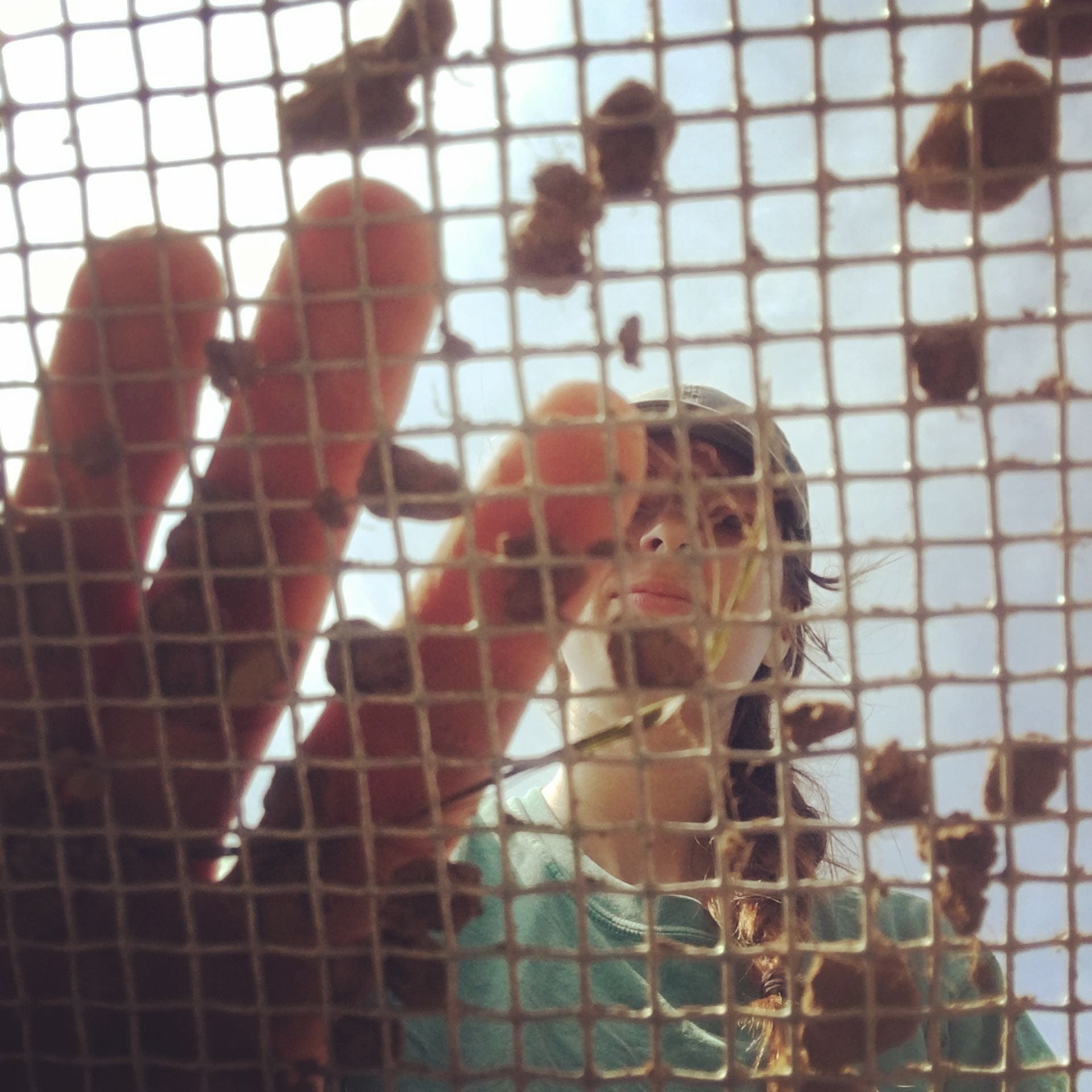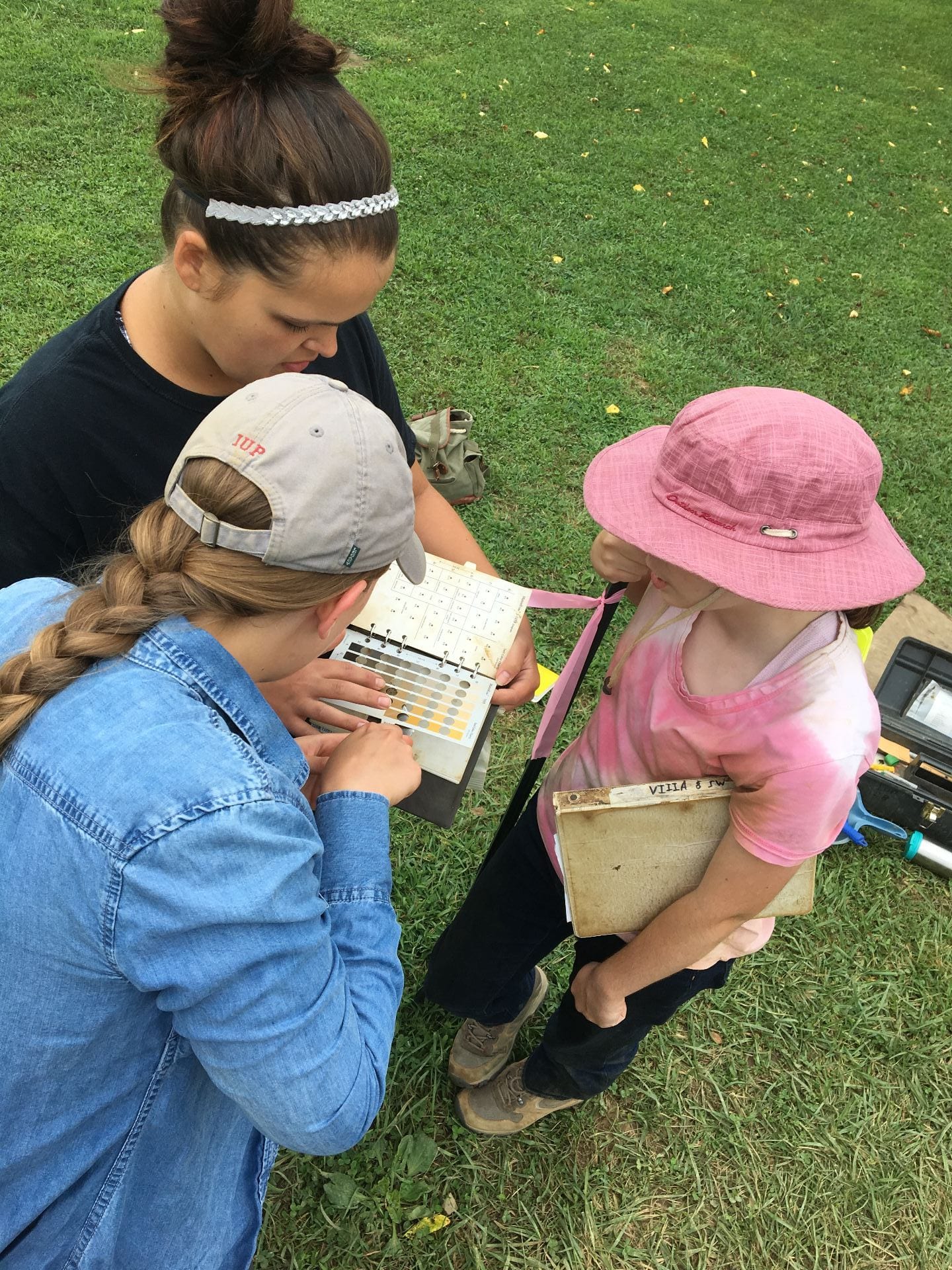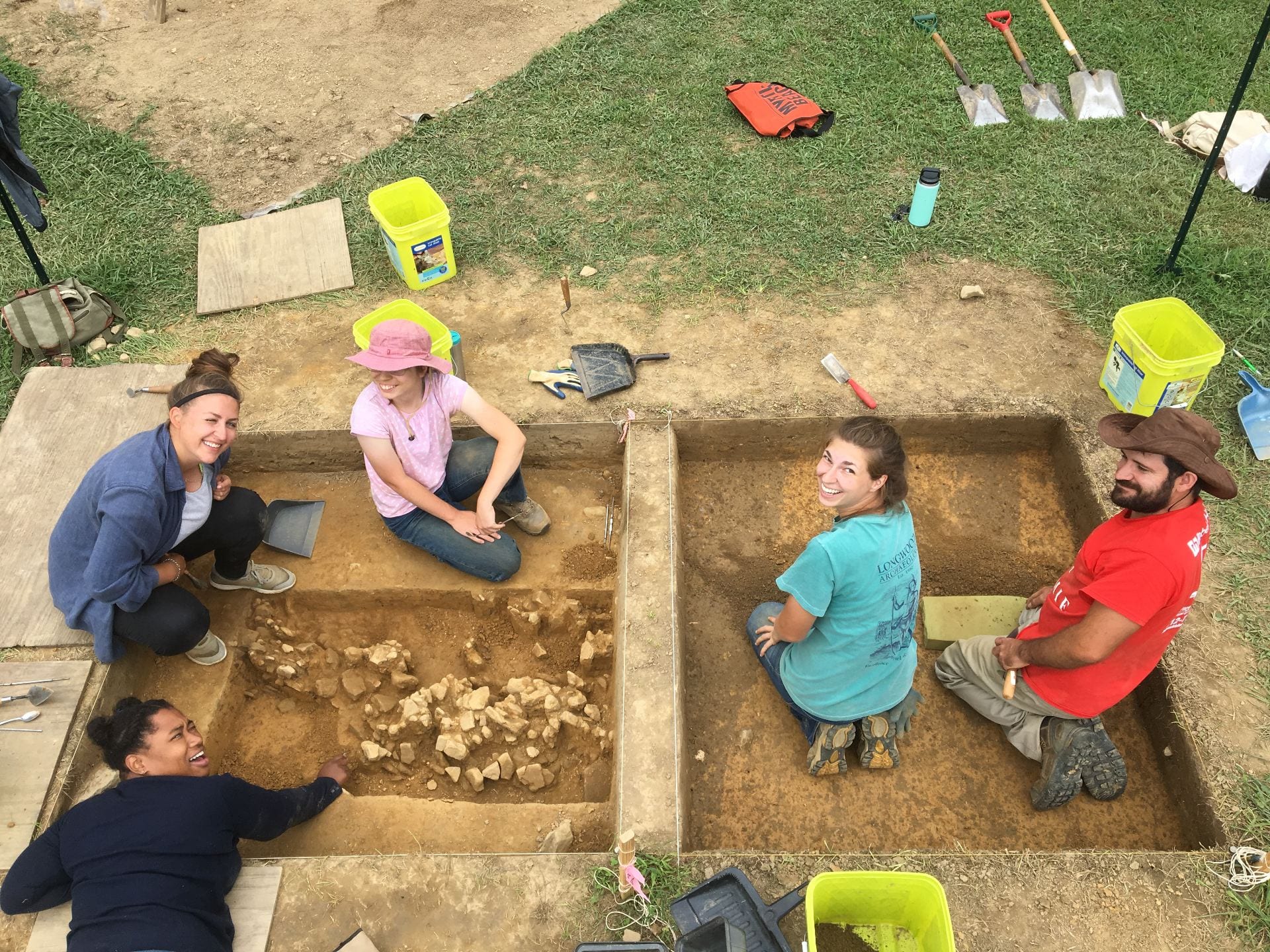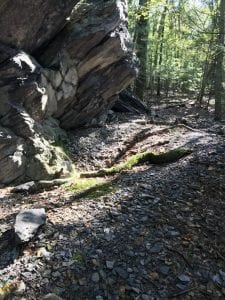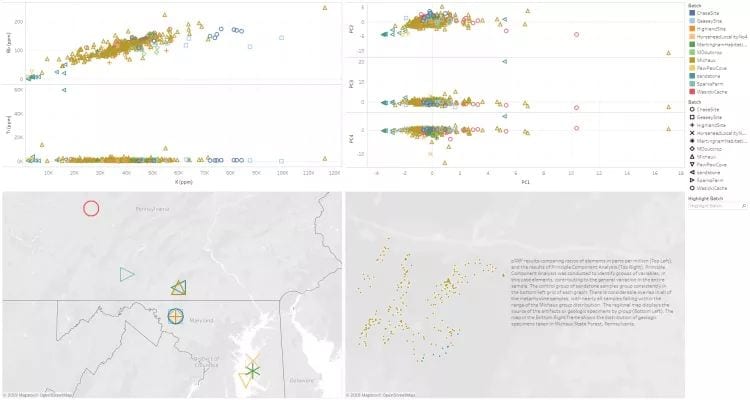By Heather Lash
I am not allowed to post pictures of the site, Aixonidai Halai, as are the rules of this excavation, but I will do my best to describe the entire site and my specific working area. The entire site is gated off by a tall metal fence which helps to outline what property is being worked on. Around the site are very elegant two- or three-story white, tan, or yellow plastered apartment buildings all surrounded by their own fence and various types of foliage. A highway runs right in front of the site, and the road which leads to the entrance of the site is a two-way street but really should be a one-way street because the number of cars which park on each side (illegally? legally? who knows because parking laws don’t exist). The entrance of the site is signified by a small clay hill which opens into an area full of rocks, clay, and ruins. To give you a better idea of what I am talking about, see the picture below of another excavation’s ruins. (Thanks to Google for providing this picture when I typed “archaeological ruins” into the search bar. I cannot take credit for this photo.)
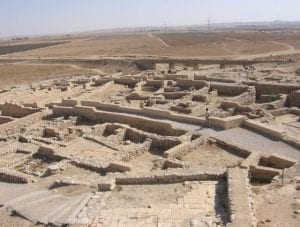
Photo belongs to Ben-Gurion University. This site is Tel Be’er Sheva.
Aixonidai Halai looks somewhat like this, except much less clean, and the walls are deteriorating much more than this. Also, there is so much dirt, the dirt is everywhere, even when you do your best to remove it from the rocks to make them clearer. The wind blows, and your entire trench is covered again. Overall though, the picture gives a pretty good idea of what I was working with in Voula. On the first day of excavating, our group of 8 was split into two different teams. My team was in trench A9 and the other team was working in trench A8. Archaeology in Greece is much different than archaeology in the United States, or at least in comparison to the field school experiences I’ve had.
The digging style consists more of fast paced work using pick axes, hand axes, hoes and shovels to clear the dirt more quickly. Trowels are only used for articulation of features, such as walls, or for helping to make the trench walls straight. Not only is the digging style different, but so are the trowels which are used while digging. Non-Greek trowels are very common and used for many other purposes such as gardening or masonry.

Greek Trowel
These trowels are sharp on two sides which connect into a point. Greek trowels are sharp on three sides, and the three sides connect to make the shape of a triangle. Due to my previous use of a non-Greek trowel, I was much more comfortable using what I was familiar with, but it was cool to get some experience with a different kind of tool. This entire excavation overall was a really interesting and different experience because you’ll only really get this kind of digging in Greece.
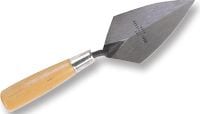
Non-Greek Trowel
The purpose of our excavation was to continue to discover the story which was uncovered by previous excavations of the area. The trench directly next to mine had stone walls intersecting and opened up into a giant courtyard which was then surrounded by more walls. The foundations of these walls are thought to belong to workshops, and we were attempting to find the remaining outline of these workshops. To start out in our trench, we first needed to remove all the topsoil which included weeds, foliage, and other modern contamination. To do this we each used pick axes across the trench, pulling up the weeds first before we could really dig into the dirt. Once we got a substantial amount of the topsoil ripped up, we would use hoes to create giant dirt piles which we then removed from the trench to start the process all over again until we reached the next layer. While digging we had to pay special attention to what we possibly could be hitting in the off chance we found something of importance. However, most of the inclusions in the topsoil are modern and are not relevant to the project. Once getting through the topsoil, the technique is started all over again, moving between pick axes, hoes, shovels and sometimes the trowels.
Layer 1 quickly became much more interesting than the topsoil. In this layer we began to find materials which gave evidence of our progression towards the time period when these buildings were first built. Our progress of digging slowed as we were told to be cautious when encountering larger rocks as they could be the feature we were looking for. When we found a rock, we would dig around it until our layer was all flat, then we would articulate the edges of the rock to determine if it was just part of the building’s collapse, (meaning no other rocks would be found below it) or if it was actually important and needed to stay in the ground. This process continued for at least one whole week until we pretty much uncovered all of the important rocks and until most of the trench was completely level.
The outcome of the findings from both trenches really helped to put things in perspective and helped to develop and challenge what had previously been found, and determined about the site as a whole. The team in A8 unfortunately did not find any large features or materials which indicated their space was a part of a workshop. They found rocks which contributed to collapse probably from the building which was found in my trench, A9. Despite not finding much, these women worked hard the entire time, and never complained about their situation. Luckily, though, my trench happened to continue and substantiate the story which was discovered before.
Not only did we uncover one large wall, (which helped to give more shape to the walls which were found in the previously excavated trench beside us), we also found a wall which extended perpendicularly from the middle of this large wall. Our professor said this perpendicular wall seemed to have been built at a later time. It was only part of a wall, and seemed to stop purposefully, probably signifying an entrance into a small space which contained evidence of a pythos. This pythos was our big find!!! A pythos in Ancient Greece was a large container used to store materials such as grains or oils and helped to keep them fresh. In our trench, within the small adjacent wall, we discovered the semicircular outline of the pythos and then the presence of many floor tiles around the back end of the pythos, most likely indicating another entrance way into the storage room. In this area, where the larger wall met up with the smaller wall was also the presence of lots of charcoal and a permanently changed soil color.
The charcoal and darkened gray soil color indicated at one point there was a fire in this spot, and in relation to the rest of the building, most likely a fire used to destroy the building after use. Another great find was the presence of steps next to the large wall signifying there was a possibility of at least one other floor in this building. In fact, our professor said by the size of the room, this building we were working in may have been one of the biggest at the site. This is why the other trench had much less luck finding things. A lot of the collapse from our building ended up in their trench. Also, if it was one large room then it would also make sense for them not to find much other than pottery sherds.
Speaking of artifacts, other finds throughout both trenches included pottery handles, stems, bases, fine Athenian blackware, some pieces of marble (not ancient), some building nails (most likely not ancient), some worked bone and shell, and plenty of floor tiles and roofing tiles. We actually found plenty of pottery and a handful of the other stuff throughout our layers but what we really wanted to find was the walls, or a hearth, or a pythos. The fact we were able to help so much and excavate to the best of our abilities and surpass our professor’s expectations was pleasing. It was a lot of fun and we all learned a lot. Yeah, we had to wake up at 5am each morning, and there wasn’t a site bathroom which made things interesting, the weather wasn’t the greatest the entire time, and we probably could have found more than we did, but none of that really mattered to us. We all worked our hardest and were proud of all our work. I would not hesitate to do it all again! Also, Voula is beautiful and I couldn’t be happier to have traveled to the coast every single day. Hopefully soon I’ll get the chance again to dig, and travel.
IUP Anthropology Department
